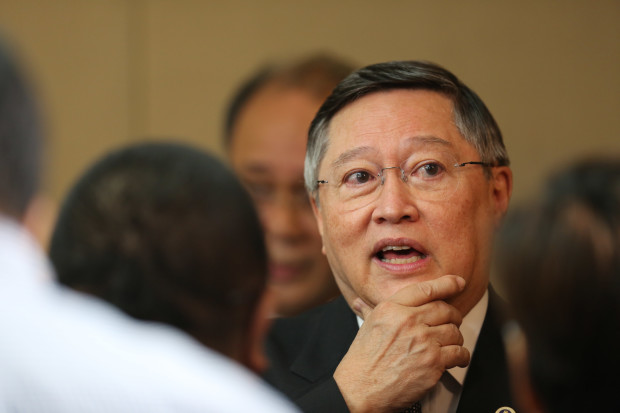Duterte bags P900B in official dev’t aid
Despite aid from the United States being put on hold, the Duterte administration has attracted close to P1 trillion in official development assistance (ODA) from economic giants China and Japan in its first seven months in office.
The record amount in ODA is expected to further increase with more commitments from other countries.
“From July 1st to now, the President has raised close to P1 trillion in ODA. And I’m only counting the amounts from China and Japan, and there’s more ODA that we have received but haven’t counted in from various countries,” Finance Secretary Carlos Dominguez III said in a Palace statement on Sunday.
Dominguez also emphasized that he was referring to ODA alone, not trade deals.
Grants, long-term loans
ODA refers to both outright grants and long-term and low-interest loans given by foreign governments to support development efforts of developing countries.
Article continues after this advertisementLast month, US aid agency Millennium Challenge Corp. (MCC), expressing concerns over extrajudicial killings amid the Duterte administration’s war on drugs, said it was putting on hold funding for a second Philippine antipoverty program.
Article continues after this advertisementMCC said its board had “deferred a vote on the reselection of the Philippines for compact development, subject to further review of concerns around rule of law and civil liberties.”
Its first five-year, $434-million compact with the Philippines ended in May last year.
In its statement, Malacañang said the ODA from China and Japan totaled some $18 billion (about P900 billion).
“The ODA from Japan, as announced by Japanese Prime Minister Shinzo Abe, is 1 trillion yen, which is equivalent to more or less $9 billion,” Dominguez said.
For the ODA from China, Dominguez said the government had already submitted the list of projects to China last November. These projects include the rehabilitation of the Agus River, irrigation facilities in the Autonomous Region in Muslim Mindanao and a seaport in Cebu.
“Our team is going to China in the third week of January to discuss how to make progress in the projects that we have submitted to them,” Dominguez said.
As for the assistance from Japan, Dominguez said the administration would start lining up the projects on Jan. 16 and discuss in greater detail the terms from Japan.
Voluntary offers
He said the foreign aid from China and Japan were not requested but rather voluntary offers from the two countries.
“I think they (China and Japan) are collaborating to help our country move ahead. I think they see a lot of potential in the Philippine economy, potential for our growth and potential for them to do business here,” Dominguez said.
He said the Duterte administration would still welcome ODA from other countries as long as the offers matched the government’s priorities.
For his part, Presidential Communications Secretary Martin Andanar said the P1 trillion ODA from China and Japan alone in less than seven months “reflects these countries’ complete trust and confidence in the leadership of President Duterte,” as well as the strength of the Philippine economy.
“The Philippines is the fastest-growing economy in Asia based on our third-quarter performance last year. We expect to build upon this milestone this year and post even better-than-expected growth,” Andanar said.
“We are the chair of the Asean this year as it commemorates its 50th year. This and the Miss Universe pageant offer opportunities for the country to put its best foot forward and show the world that we are moving ahead with great strides,” he added.
Bilateral ODA preferred
Budget Secretary Benjamin Diokno said earlier that with the sizable commitments from foreign countries, the economic team wanted to continue securing more bilateral ODA.
“We will borrow given the best terms and conditions. For example, if we can borrow at 0.25-percent interest rate, 40 years to pay from a bilateral source compared with 5-percent interest, 25 years to pay from a multilateral source, other things equal, then it’s a no-brainer: We borrow from the bilateral source,” Diokno said in a text message.
“The speed by which the loan will flow into the economy will also matter,” he said.
The budget chief said a bilateral ODA was both cheaper and faster to tap than a multilateral ODA.
Socioeconomic Planning Secretary Ernesto M. Pernia said the government would prefer to borrow from “whichever is cheaper and faster.”
“The trips to China and Japan simply afforded more options,” said Pernia, who is also director general of the National Economic and Development Authority.
As bilateral ODAs are cheaper, Pernia said the government might pursue infrastructure projects through a mix of public-private partnership (PPP) and ODA or government funding.
Hybrid PPPs
Diokno had said the administration preferred what he called “hybrid PPPs,” in which the government would take care of the financing and the construction, while the operations would be entrusted to the private sector.
“This way, the government can take advantage of lower borrowing rates through development assistance. At the same time, it will allow the private sector to efficiently manage operations of PPP projects,” he said in a recent speech.
As domestic interest rates remain relatively low, the Duterte administration wanted to finance its programmed wider deficit of 3 percent of the gross domestic product in the next six years through a mix of 80-percent local and 20-percent foreign financing. —WITH A REPORT FROM BEN O. DE VERA
